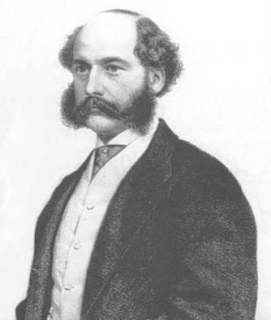Events during 1862
During the latter months of 1861, Charles Sprengel Greaves
the author of the Criminal Law Consolidation Acts was granted Royal Assent, and
by 1st November came into effect.
The changes that were made were
The death penalty was limited to murder, embezzlement,
piracy, high treason and acts of arson.
The age of consent was codified to 12 year of age.
 |
| Sir George Grey Home Secretary |
The Home Secretary, who at the time 1861 was Sir George
Grey, had the power to reprieve or commute sentences from the judiciary and
Privy Council
There were further changes to
Accessories and Abettors Act, codifying the law on
accessories and abettors.
Coinage Offences Act, codifying the law on counterfeiting of
coins
Criminal Statues Repeal Act
Forgery Act, codifying the law on forgery
Larceny Act, codifying the law on larceny and related offences
Malicious Damages Acts, codifying the law on criminal damage
Offences against the Person Act, codifying the law on violent
offence against the person and abortion and creating the offence of “causing
bodily harm by wanton or furious driving”
With the outbreak of the American Civil War during 1861, which
at the same time brought the Lancashire Cotton Famine. This was the textile industry
in the North West England depression. The depression was brought by about the overproduction
of cotton of the contracting world markets.
Also, the depression coincided with interruption of baled cotton imports
from America.
What events occurred during 1862, here in the United Kingdom.
 |
| William Frederick Windham |
The year started with the end of one of the longest and most
expensive lunacy cases. 1861, William
Frederick Windham, the son of William Howe Windham and heir of Felbrigg Hall,
Norfolk which he inherited early August 1861, later on that month, he married
Anne Willioughby.
His uncle did not approve the marriage, Windham was the
subject of noted “lunacy” case. The case,
heard from 140 witness lasted for 34 days, ending during the January 1862. The result of the case, was that Windham, was
found to be of sound mind.
 |
| Napoleon III |
During that January, British and French forces arrived in
Mexico, at the beginning of the French intervention of Mexico. December 1861, London, countries France,
United Kingdom and Spain signed in agreement the Convention of London, a
joint effort to repay the debt repayments from Mexico.
8th December, the three navies disembarked their
troops at the port city of Veracruz, Gulf of Mexico. The British and Spanish commanders soon
discovered that the French had an ulterior motive and they wanted to
unilaterally plan to seize control of Mexico. The French commander, was Napoleon
III, the nephew of Napoleon
 |
| Map of the French Intervention of Mexico 1861 - 1867 |
The end result of the campaign, 5 years later, during June
1867, that the Mexicans had claimed victory, where the Second Mexican Empire
was established, and the French withdrew from Mexico.
Northumberland January 1862, 204 miners lost their lives
during the Hartley Colliery Disaster. The
Disaster was established by the collapse of the machinery within the mine.
Following the outbreak of the Lancashire Cotton Famine, the
previous year, riots broke out in Stalybridge during the March.
English Courts, during the May, were able to issue writs of habeas
corpus in British colonies and dominions following the passing of the Habeas
Corpus Act, 1862.
 |
| Old Westminster Bridge 1789 |
 |
| New Westminster Bridge |
May saw the opening of the new Westminster Bridge, which was
designed by Thomas Page.
Teachers working at Elementary Schools in England and Wales,
after the introduction in June of the ‘Revised Code, were paid by the
Government Aids, which were paid in annual grants, based on upon attendance, proficiency
of student, teacher qualifications and the states of the school.
 |
| Charles Dodgson "Lewis Carroll" |
The story of Alice’s Adventure in Wonderland was told
for the first time, July, when Charles Dodgson “Lewis Carroll”, tells the story
to his story, Alice Liddell, on a rowing trip from Folly Bridge, Oxford to
Godstow.
August saw the last mail coach run from Carlisle to Hawick,
Scotland.
Charles Lennox Richardson, born 1834, London. During 1853,
moved to Shanghai to seek his fortune in the China trade. 1862, Charles announced that he would retire from
the world of business, and en route back to England, stopped off at the treaty
port of Yokohama, September, where he visited a temple. It was here, that the Namamugi Incident broke
out. During this incident that Charles was killed. He was buried in the Yokohama Foreign General
Cemetery.
Glasgow, October, Jessie M’Lachlan, was found guilty in the
Sandyford murder case, however, sentence was commuted to life imprisonment,
rather than the death sentence.
During November, someone could be flogged if found guilty of
robbery.
 |
| Joseph Bazalgette |
In London during November, Joseph Bazalgette begins
construction work on the Thames Embarkment.
 |
| J. Bruce Ismay |
Notable births during this year including J. Bruce Ismay,
December. Ismay, the chairman and
Managing director of the White Star Line and surviving the sinking of the Titanic
during 1912.
 |
| Robert Knox |
Notable deaths during year, is that of Robert Knox, dying
during December. Knox was the surgeon,
anatomist and zoologist. Knox is best
remembered with his involvement during the Burke and Hare murders. Knox is buried at Brookwood Cemetery.
Books published during this year, included George Eliot’s Romola
and Anthony Trollope’s Orley Farm
 |
| Romola by George Eliot Frontcover of Orley Farm by Anthony Trollope |




Comments
Post a Comment